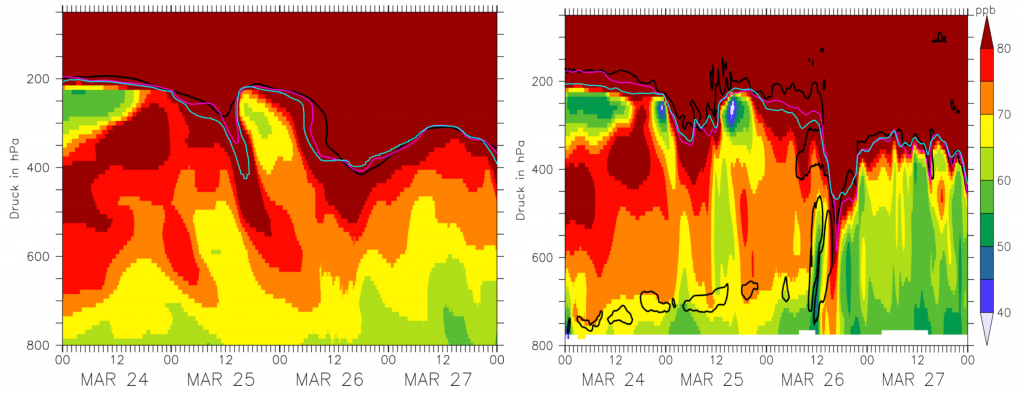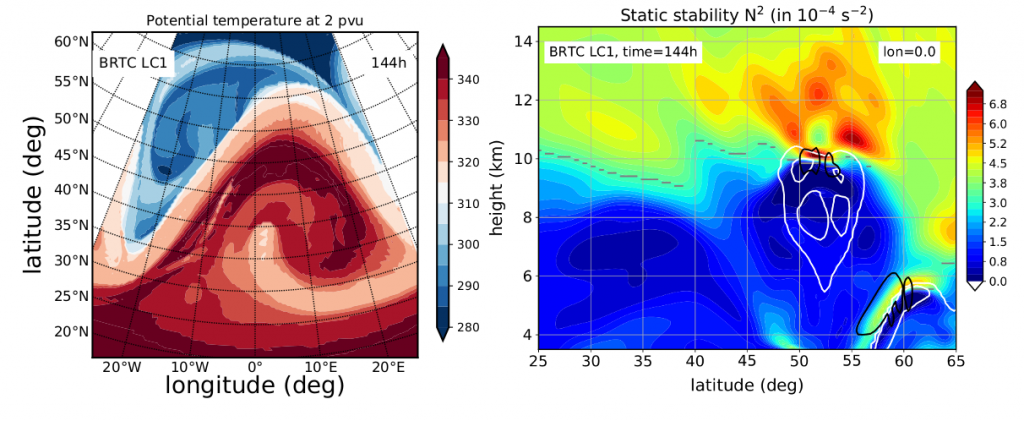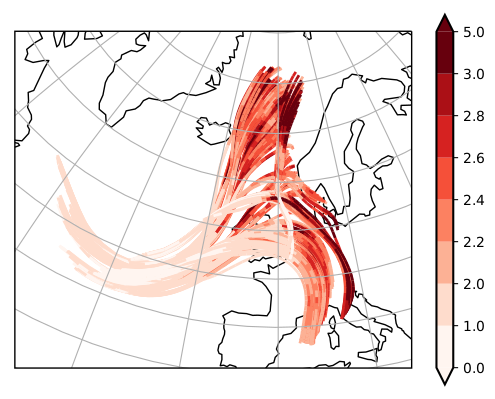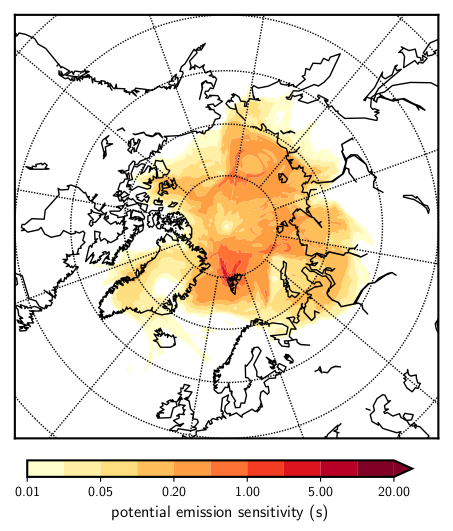A comprehensive analysis of airborne measurement data requires an initial characterization of the instrument. However, the use of numerical model data as well as analysis and reanalysis products help to put the in-situ data into the meteorological context and to understand the atmospheric processes governing the distribution of trace species in the atmosphere. In our group we use Eulerian and Lagrangian numerical models as well as analysis and reanalysis products from numerical weather prediction centers (mainly ECMWF).
Lagrangian models allow to trace the history of individual air parcels which have been measured during a flight. These models have also proven to be very useful to interpret measurement data which have been subject to tropospheric long range transport (e.g., into the Arctic) or to transport in the stratosphere and across the tropopause. Eulerian models allow to study the atmosphere very idealized and to address specific processes or to simulate the Earth system comprehensively.
Eulerian models
EMAC
Global chemistry climate models can provide climatologies of trace species and allow to study processes on large spatial or long temporal scales. In our group we use the global model of the MESSy consortium (www.messy-interface.org, MESSy = Modular Earth Submodel System) which uses the dynamical core of the ECHAM global circulation model. Model data is used in comparison to satellite data, to analyse stratosphere-troposphere exchange on larger scales, or as input for higher resolution regional models.
Potential temperature at the dynamic tropopause from an EMAC simulation.
MECO(n)
Individual flights during an airborne measurement campaign are often designed to study a certain process in the atmosphere. Highly resolved model output can help to comprehensively understand the meteorological situation. For such situations we use output from the regional model of the MESSy consortium, called MECO(n). This model system uses the MESSy infrastructure along the dynamical core of the COSMO model with model fields from EMAC as meteorological and chemical boundary conditions.

COSMO
Individual atmospheric processes are often best studied using simplified versions of complex models. In our group we study upper tropospheric/lower stratospheric dynamic processes using idealized setups of the DWD models COSMO and ICON. Our particular focus is on stratosphere-troposphere exchange in the extratropics and the formation of the tropopause inversion layer.

Lagrange Modelle
LAGRANTO
During individual flights of an airborne campaign air masses of different origins are measured. Consequently, these air masses have different transport histories and encountered different atmospheric processes. For example in extratropical cyclones warm air masses from subtropical regions flow into the same area as air masses from cold subpolar regions. To study the history of the measured air masses we use the Lagrangian trajectory model LAGRANTO which allows to calculate the path of kinematic trajectories. The calculations require meteorological input fields from numerical weather prediction models or analysis/reanalysis data.

FLEXPART
A second Lagrangian model is the flexible particle dispersion model FLEXPART. This model allows to trace air parcels in the atmosphere but in contrast to LAGRANTO can include the effects of sub-grid scale turbulence in the calculation of the pathways. This is of advantage in studies close to the boundary layer where such turbulent motions are important. Moreover, this model directly allows to assess the so called potential emission sensitivity, a measure of how much a certain region in the atmosphere could have potentially contributed to measured mixture of trace species within the air parcel.

